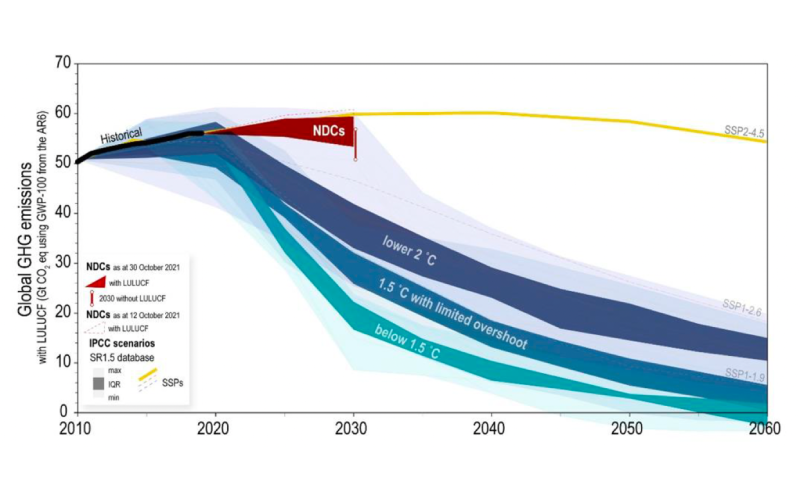You are here
- Home
- COP26 in one image
COP26 in one image

COP26 has been bringing together parties from across the world to accelerate action towards the goals of the Paris Agreement and the UN Framework Convention on Climate Change. The Open University has official observer status at COP26 and is learning from the conference to inform the university’s wider sustainability mission and inspire students and staff to take action. Here are some of the conference’s highlights, as told by our Open University observers.
COP26 Diary - 5 November: Stephen Peake, Professor of Climate Change and Energy.
UN secretariats always tread a very fine line. They must unite all Nations by remaining as neutral and independent as possible. They play a parental role in chivvying the squabbling family along. Secretariats are made up of staff from over 100 countries and represent a blend of diverse cultures, gender, and professional backgrounds.
The UNFCCC (United Nations Framework Convention on Climate Change) secretariat facilitates the negotiations – not to judge, or to admonish but to get the negotiating Parties to move faster. A great deal of the day-to-day work of the secretariat is called “compilation and synthesis” reports. Nations’ views on any manner of topic or issue are officially called for, a deadline for responses is set, responses are compiled and synthesized.
When I worked in the UNFCCC secretariat in the late 90s, I once had to compile and synthesise a report on the definition of “what constitutes a tree”. I recall waiting by the fax machine at the deadline: Canada did it in about half a page, the US took ten.
Last night (4 November) the UNFCCC quietly released what is possible one of the most important and timely compilation and synthesis statements in the history of the climate negotiations. In a written letter to heads of delegations, the UNFCCC Executive Secretary, Patricia Espinosa published the graphic below. She did so without direct comment or judgement.
The graphic shows the gap between where global GHG (Greenhouse Gas) emissions are heading (red) and where we need to be to stay under 2oC (dark blue), and around or under 1.5 oC (lighter blues). Since the Paris Agreement was signed in 2015, Nations have constantly updated “Nationally Determined Contributions” (NDCs) which are their projected emissions, considering all the good intentions for reducing them and staying within these temperature limits.
You don’t need to be a climate expert to see that a massive social, economic, and technical challenge lies ahead. But it is not all gloom and doom – that global business-as-usual emissions are predicted to peak in 2030, is itself amazing. Few scenarios would have predicted that a decade ago.
Related articles
- Supporting climate action through digital education: new free BOC 26th February 2024
- Introducing a new free course - Climate Psychology: facing the climate crisis 8th February 2024
- Climate Change and machine learning - Climate Perspectives 8th February 2024
- Go Green: What is eco-anxiety? 8th February 2024
- Go Green: Fashion Fixing and Mending 8th February 2024